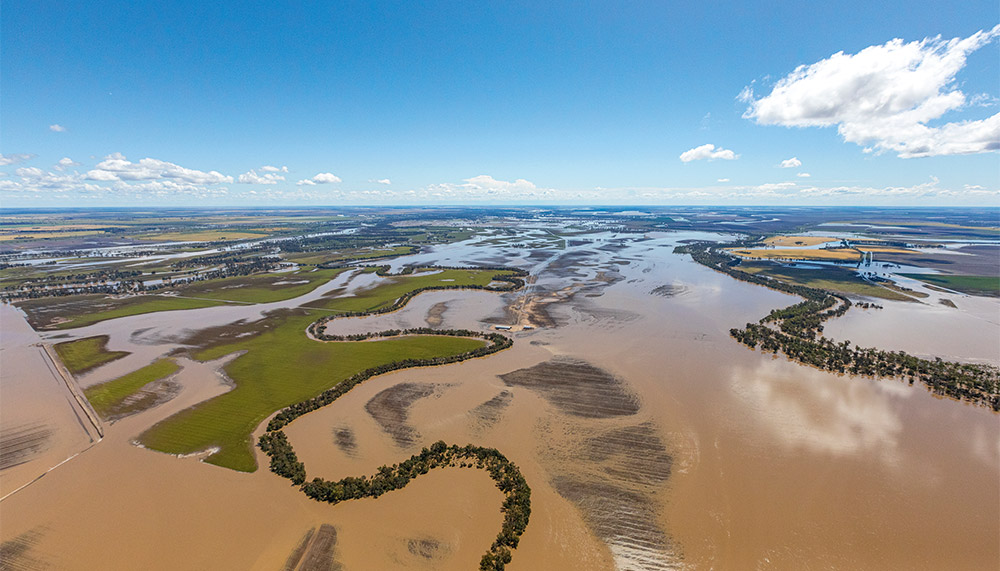As Australia entered its third year of La Niña (a pattern previously seen in 1954–57, 1973–76 and 1998–2001) OUTBACK contributor Josh Smith took to the skies with long-term collaborator and pilot Joe Smith to photograph the area around Moree, north-western NSW.
Photos Josh Smith
The latest flooding has affected areas from Walgett to Wagga Wagga, and across into Victoria, Queensland and SA. Cropping has been seriously affected, including Christmas cherries, potatoes in Tasmania, and wheat and cotton harvests.
At Boggabilla, grain grower Pete Mailler spent $130,000 on rubber tracks to try to get his harvester on the sodden ground, and then another $70,000 to get the tracks air-freighted to his property. “That’s not in the budget,” he says. “We’ll probably lose 20–30% of our crop, which is a lot and it hurts, but we’re not devastated. The numbers are pretty scary wheh you consider what’s going on in a broad scale.” He estimates more than $400 million will be taken out of the economy in the Moree Plains Shire, and destroyed roads will hamper recovery. “This will be felt in the community for years.”
National Farmers’ Federation CEO Tony Mahar agrees. “These floods will continue to wreak havoc by delaying future planting schedules and prolonging the summer grain harvest,” he says. “But there has been some good news, too. Some of inland Australia’s station country has welcomed the unseasonal rains, which have filled dams, flooded creeks and are already transforming landscapes.”
At Farina station, 600km north of Adelaide, Kevin Dawes recorded 97.8mm of rain in October (which is usually a dry month), smashing the previous record of 84.1mm in 1904. “While the floods have been disastrous in other parts of Australia, for the outback and pastoralists, this has been a godsend,” he says. “This good, soaking rain will generate shrubs and trees that died in the drought.”
It’s unlikely the La Niña cycle will break down any time soon, according to Professor Mark Howden, director of the Institute for Climate, Energy and Disaster Solutions at ANU. “As well as La Niña this year we’ve had the Indian Ocean contributing significant moisture – from Darwin down to Melbourne – and also we’ve had the Southern Ocean patterns producing higher levels of rainfall in the south-east. And underneath that we have climate change, which is affecting those drivers. Because of the higher temperatures, the atmosphere can hold more rainfall.”
CEO of Rural Aid John Warlters says donations are needed to pay for fodder and drinking water. He says a few months after the floods, farmers may still need help. “It’s a bit of depression and an element of fatigue – ‘I’m flat, I’m feeling a bit down, I’ve busted my backside to get the farm back up and running.’ They need some help to get themselves back up and running properly.” To donate, or speak to a Rural Aid counsellor, call 1300 327 624.
This story excerpt is from Issue #146
Outback Magazine: December/January 2023









